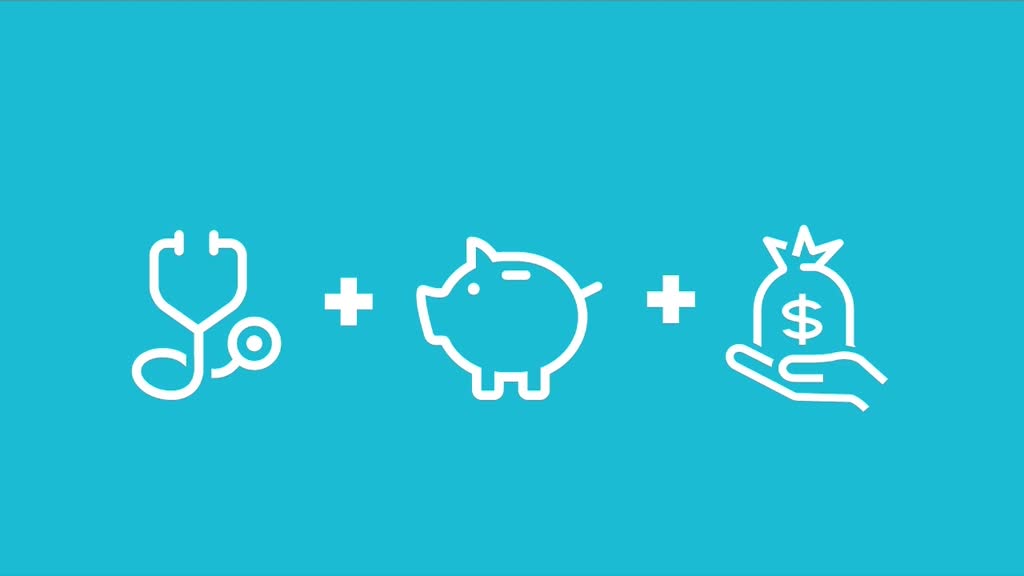Health Savings Accounts (HSAs) are becoming increasingly popular as a way to manage healthcare costs. Paired with high-deductible health plans (HDHPs), HSAs offer a range of benefits that can help you save money and plan for future medical expenses. Here’s an in-depth look at the advantages of HSAs and how they can work with your health insurance.

What is an HSA?
A Health Savings Account (HSA) is a tax-advantaged savings account designed to help individuals with high-deductible health plans (HDHPs) save for and pay for qualified medical expenses. Contributions to HSAs can be made by individuals, employers, or both, and the funds can be used to cover a variety of healthcare costs, from doctor visits to prescription medications.
Key Benefits of HSAs
- Tax Advantages
- Pre-Tax Contributions: Contributions to an HSA are made with pre-tax dollars, which can lower your taxable income. This means you pay less in federal income taxes.
- Tax-Free Growth: The money in your HSA grows tax-free. Any interest or investment earnings accumulate without being subject to federal taxes.
- Tax-Free Withdrawals: Withdrawals for qualified medical expenses are also tax-free, ensuring that you can use your savings without additional tax burdens.
- Portability
- Account Ownership: Unlike Flexible Spending Accounts (FSAs), HSAs are owned by the individual, not the employer. This means your HSA funds stay with you even if you change jobs or retire.
- Rollover Capability: Any unused funds in your HSA at the end of the year roll over to the next year. There’s no “use it or lose it” rule, allowing you to build substantial savings over time.
- Flexibility in Spending
- Qualified Medical Expenses: HSAs can be used to pay for a wide range of qualified medical expenses, including deductibles, copayments, prescription medications, dental and vision care, and more. The IRS provides a comprehensive list of qualified expenses.
- Long-Term Savings: Since the funds in an HSA roll over year to year, you can use your account to save for future healthcare expenses, including those in retirement.
- Retirement Savings
- After Age 65: After you turn 65, you can use HSA funds for non-medical expenses without a penalty, though you will owe income tax on those withdrawals. This flexibility makes HSAs a potential supplement to your retirement savings strategy.
- Medicare Premiums: HSA funds can be used to pay for Medicare Part B, Part D, and Medicare Advantage premiums, as well as certain out-of-pocket expenses.
- Employer Contributions
- Boosting Savings: Many employers offer contributions to employees’ HSAs as part of their benefits package. These contributions are a great way to boost your healthcare savings without impacting your own income.
How to Maximize Your HSA
- Contribute the Maximum Amount
- Each year, the IRS sets contribution limits for HSAs. For 2024, the limits are $3,650 for individuals and $7,300 for families. Those aged 55 and older can contribute an additional $1,000 as a catch-up contribution.
- Invest HSA Funds
- Many HSA providers offer investment options for your HSA funds, similar to a 401(k) or IRA. Investing your HSA funds can help your savings grow over time, potentially outpacing inflation and increasing your available healthcare funds.
- Keep Track of Expenses
- Maintain receipts and records of all qualified medical expenses paid with your HSA. This documentation is crucial for tax purposes and to ensure that your withdrawals remain tax-free.
- Use HSA Funds Wisely
- Consider paying out-of-pocket for smaller medical expenses and allowing your HSA funds to grow. By preserving your HSA balance, you can maximize the benefits of tax-free growth and save for significant future healthcare costs.
Potential Drawbacks and Considerations
- High-Deductible Requirement
- To open and contribute to an HSA, you must be enrolled in a high-deductible health plan (HDHP). HDHPs require you to pay higher out-of-pocket costs before insurance coverage kicks in, which may not be suitable for everyone.
- Eligible Expenses Only
- HSA funds must be used for qualified medical expenses to remain tax-free. Non-qualified withdrawals are subject to income tax and a 20% penalty if made before age 65.
- Administrative Fees
- Some HSA providers charge administrative fees for account maintenance or investment options. It’s essential to understand these fees and choose a provider that aligns with your financial goals.
Conclusion
Health Savings Accounts (HSAs) offer significant benefits, including tax advantages, portability, flexibility, and retirement savings potential. When paired with a high-deductible health plan, an HSA can be a powerful tool for managing healthcare costs and planning for the future. By understanding the benefits and maximizing your contributions, you can effectively use an HSA to enhance your financial well-being.
Call to Action
Do you have questions about how to get started with an HSA or how to maximize its benefits? Share your thoughts in the comments below! For more insights on health insurance and financial planning, subscribe to our newsletter or follow our blog. Explore our other articles to learn more about managing your healthcare expenses effectively.



Thanks for knowledge 😊😊😊
Thanks for this article
Thanks for sharing
Thank you for sharing.
Thanks <3
😊😊😊
❤️❤️❤️
Thanks
🥰🥰🥰